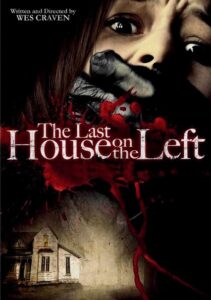The Last House on the Left-1972
Director Wes Craven
Starring Sandra Cassel, Richard Towers, Eleanor Shaw
Top 250 Films #218
Top 40 Horror Films #32
Scott’s Review #1,387
Reviewed August 6, 2023
Grade: A
Heavily influenced by Ingmar Bergman’s 1960 masterpiece The Virgin Spring, The Last House on the Left (1972) is essentially the same story.
The time is modern and the locale is switched from Sweden to New York and the religious exploration is not there. But, rest assured, both films are brutal and not for the faint of heart.
It’s not violence for violence’s sake though and a powerful revenge tale surfaces amid unique camera styles and settings.
Wes Craven, who put the horror genre back on the map decades later in 1996 with Scream writes and directs the independent and raw The Last House on the Left.
He was accused of going too far in the film and exploiting pain and suffering, mostly by victimizing female characters, but the truth is the situation can and has occurred in real-life.
The film brings powerful realism to the terrifying actions of horrible people and if that’s too much for some they shouldn’t watch this film.
But, lovers of experimental cinema should.
Craven’s genius is mixing sunny, cheery sequences, poppy music, and comic relief with uncomfortable scenes of rape and torture so well that the audience’s reaction is guttural and rage infused. The dark scenes occur on a sunny afternoon in the woods with upbeat music on what would otherwise be a pleasant day.
Many horror sequences add darkness, thunderstorms, or other special effects to set the proper mood but Craven goes way left of center.
Perky teenagers Mari (Sandra Cassel) and Phyllis (Lucy Grantham) head into New York City for a concert where they look for some marijuana. They stumble upon a foursome (three men and one woman) of escaped convicts who force them to endure a night of rape and torture.
The following day the gang kills the girls in the woods, not realizing they’re near Mari’s house. When they pose as salesmen and are taken in by Mari’s mother (Eleanor Shaw) and father (Richard Towers), the parents quickly figure out their identities and plot revenge.
A side story involves two incompetent police officers who unsuccessfully try to pursue the escaped convicts.
I immediately was made aware of the very low-budget filmmaking with muted, grainy visuals. The cinematography is what makes The Last House on the Left work so well. With high caliber, glossy texture it would seem too polished.
The acting isn’t brilliant and the overall look and feel is reminiscent of a John Waters film. Again, this only enhances the bare bones, late-night viewing experience.
There are warnings galore. The pain and suffering endured by Mari and Phyllis are hard to watch and I felt their degradation in my bones. I won’t go into gory details but it isn’t fun.
However, there is some satisfaction to be had. When Mari’s parents cleverly set traps inside their house for the murderers to fall into there are cheer out loud moments of celebration for the audience.
One murderer even gets his penis bitten off.
Suspension of disbelief must be given to justify how this chain of events could occur. What are the chances the convicts would happen to bring the girls to Mari’s house in the middle of nowhere?
Wouldn’t the parents be in shock or having a meltdown over the realization of Mari’s death? Somehow they find the wherewithal to construct a stagey revenge plot on the fly.
The dumb cops will do no favors for police officers looking for some respect.
Still, the utter depravity and brutality of The Last House on the Left (1972) make it one of the most genuine feeling horror films of all time. Add the fact that the situation could happen and the result is a frightening one.

